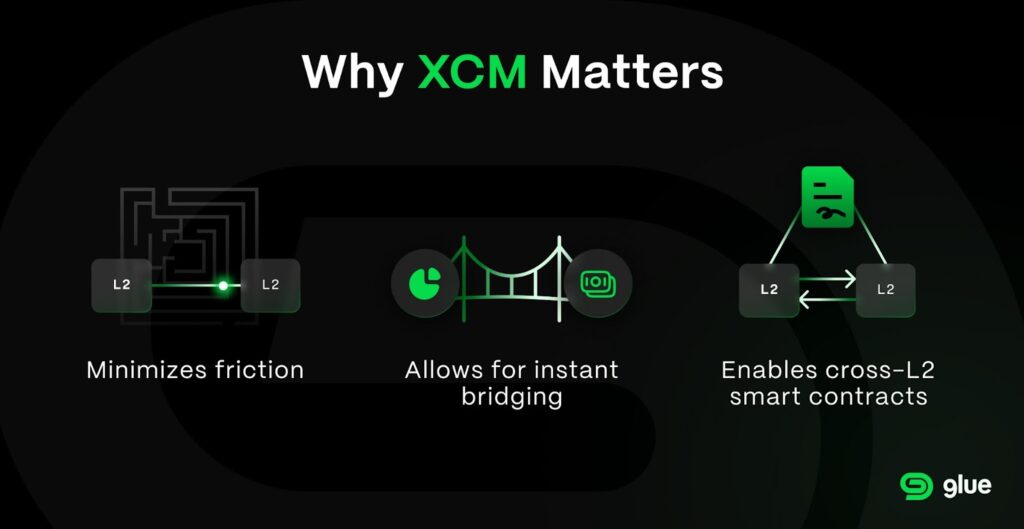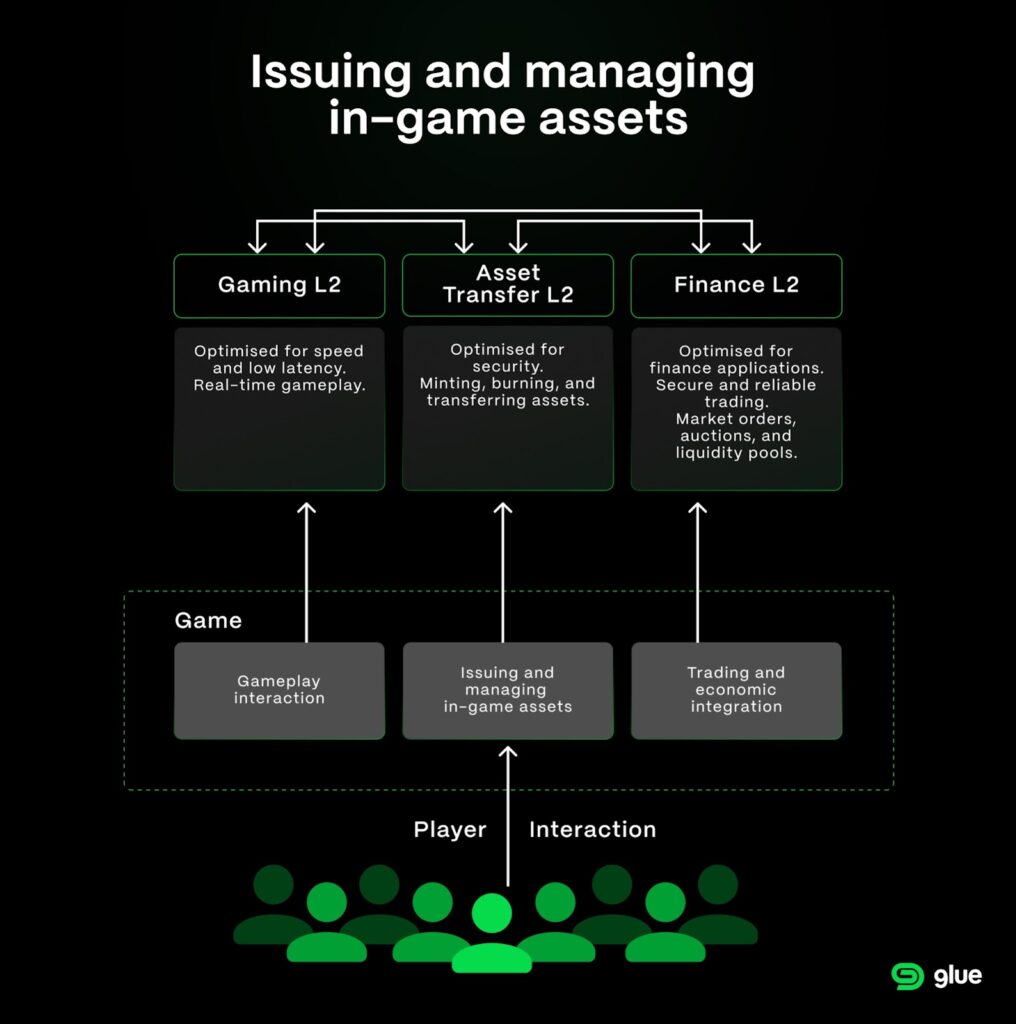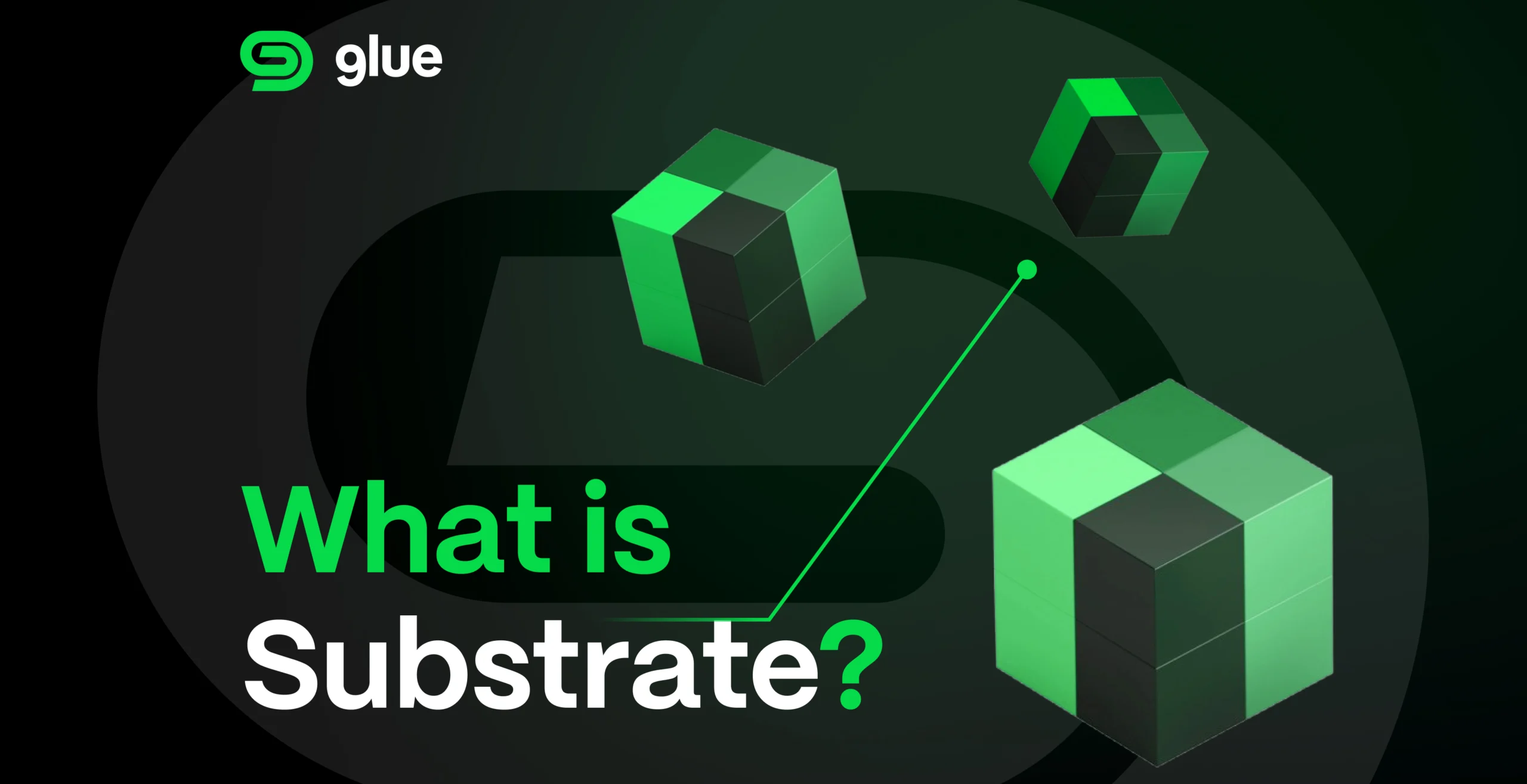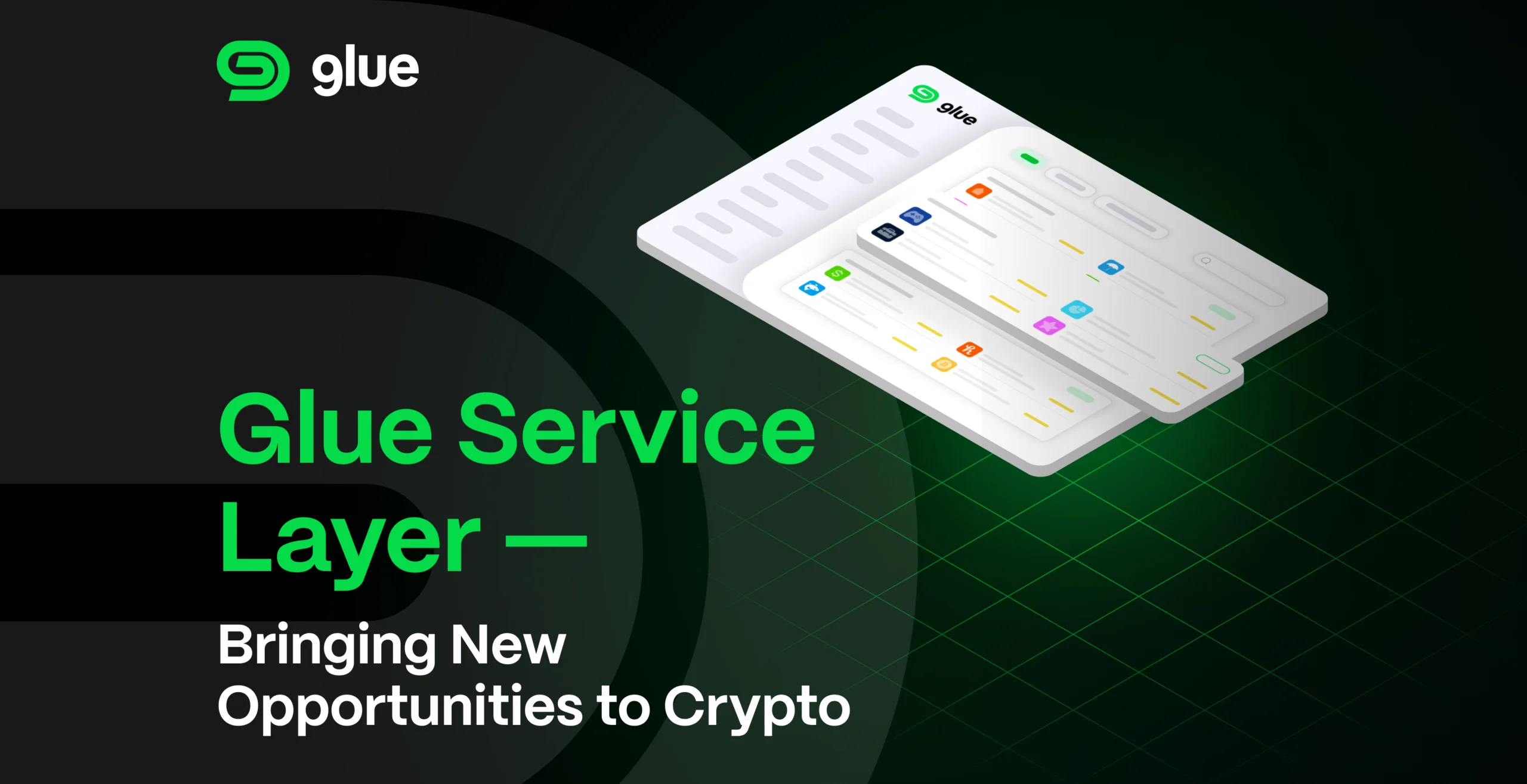The promise of blockchain and crypto is one of decentralization and individual ownership; however, all too often, users are forced to make a trade-off when considering whether to use a centralized or decentralized service.
- Centralized exchanges (such as Binance, FTX, Celsius) generally offer a better user experience and security, but in the end, you don’t control your assets. They are held by the exchange and can be misappropriated or frozen for different reasons.
- Decentralized exchanges (such as Uniswap, Pancakeswap) generally offer more financial products and flexibility, but can suffer from clunky interfaces. There’s also very little recourse to getting your funds back in the event of a security breach.
Glue is here to bridge that gap, bringing users all the advantages of centralized and decentralized exchanges, without the drawbacks. Our ecosystem encourages users of all levels with both simple and advanced dashboards, promotes development through a Substrate-based Layer 1 and EVM compatible Layer 2s, and uniquely, includes the Glue Service Layer, where providers from the world of traditional finance can enter a whole new market, offering services like insurance to crypto users.
So how will Glue achieve all this? Let’s go behind the scenes and see what makes up the powerful Glue ecosystem.
A Unique Blockchain Infrastructure
The goal of Glue is to ensure that users can securely access any kind of app they are looking for, whether it be around finance, gaming, or NFTs. Depending on the use case, each application has to be built considering different specifications and priorities.
For this reason we chose to build on Substrate, a robust and customizable framework, ensuring that Glue can scale effectively and adapt to the ever-changing needs of different applications.
One of Substrate‘s standout features is its flexibility. Its vast library means Glue can pick and choose the components it needs to build custom blockchains — just like a set of LEGO blocks. This modular approach allows Glue to create highly specialized Layer 2s (L2s) for different purposes.
Limitations of Traditional Models
Traditional blockchain models, such as Solana, and including Layer 2s like Arbitrum and Optimism, often fall short regarding specific application needs. Arbitrum and Optimism lack the flexibility required for peak performance and Solana suffers despite its speed, with even tiny upgrades affecting the whole system, introducing greater complexity and risk.
The Power of Use-Case Optimization
As mentioned above, Glue’s initial approach involves a main base Layer 1 and three Layer 2s (as we scale, we intend for there to be more than three L2s). Glue achieves the same effect as sharding — which involves splitting up the blockchain network to increase scalability and speed — through standalone Layer 2 blockchains, where each layer is tailored for specific use cases like finance, gaming, or asset transfers. Depending on the elements used within a particular Glue application, the L2s will work together, along with the L1, to ensure optimal performance.

Fast iteration
One of the most significant advantages of Glue’s model is the ability to iterate rapidly. Monolithic blockchains like Ethereum face major hurdles in implementing new technologies due to the risk of disrupting the existing ecosystem. They are also subject to forks, occurring when network participants don’t agree on an upgrade, meaning that the blockchain needs to be split in two: think Bitcoin and Bitcoin SV, or Ethereum and Ethereum Classic.
Glue, on the other hand, can implement upgrades without lengthy delays, fostering a more responsive and user-centric ecosystem. It can also do so without forking, thanks to Substrate’s built-in governance system which enables forkless upgrades.
Community driven development
Glue’s ecosystem structure guarantees the security of the entire ecosystem and dictates the roadmap for Layer 2 development. This ensures a unified vision and prevents the fragmentation and inefficiency that can be observed in other blockchain models.
Basically, instead of letting each L2 blockchain go its own way, Glue’s L1 community is the decision-maker. This means the L1 community guides the development roadmap for all L2s with a singular vision, encouraging faster innovation and rewards smooth integration — a win-win-win for the L1 community, developers building on Glue, and of course, users, who can smoothly explore a range of products.
This is not the case for other ecosystems, where Layer 2s are independently managed, have competing interests, and may use different tokens. This will result in one clear winner while other L2s are needlessly hampered from reaching their potential and seeing returns for their hard work.
Incentivizing Collaboration through a unified token model
Glue’s unified token model (see below) ensures that L2s don’t compete for transaction volume and token value. A single token — GLUE — for fees across both the Layer 1 and Layer 2s aligns each party’s interests. When a new L2 is introduced, the ecosystem does not need to worry about the token losing transaction volume; it will simply shift to another part of the ecosystem, minimizing volatility and effects to existing dApps.
This is a stark point of difference from other projects like Polkadot, where L2s are auctioned off and don’t have reason or incentive to support each other. Glue does everything to make things smoother for developers, so they in turn can ensure the user benefits from seamless bridging and transactions.
Security vs. Censorship Resistance
Finally, Substrate’s innovative framework allows Glue to decouple security from censorship resistance, which involves (in rare and specific cases) actors utilizing their role as validators in a network to disallow certain transactions from occurring on the blockchain. The L1 guarantees security, providing a consistent and robust foundation for all L2s. Censorship resistance, on the other hand, can be customized for each L2, allowing for more nuanced trade-offs based on the specific requirements of the different applications.
For example, a financial L2 would require a high level of censorship resistance to protect users’ assets, while a gaming L2 might prioritize speed and low transaction fees over strong censorship resistance.
Interconnected Layer 2s, with seamless cross-chain transactions
One big issue with Layer 2 blockchains is ensuring that they can communicate with each other easily.
Our implementation of Cross-Consensus Messaging (XCM), a technology developed by Parity Technologies and used within Polkadot, allows for seamless communication and interaction between the ecosystem’s L2 solutions.
Why XCM Matters

- Minimizes friction: In many blockchains, moving assets between different layers is a complex process, often requiring third-party bridges that can be slow, costly, and unsecure. XCM solves this by enabling direct communication between L2s and removing the need for intermediaries.
- Allows for instant bridging: XCM allows for near-instantaneous transfers of assets and messages between L2s. This means you can move your assets easily across different parts of the Glue ecosystem without delays or difficulties.
- Enables cross-L2 smart contracts: Smart contracts on one L2 can interact directly with smart contracts on other L2s. This opens up a world of possibilities for building sophisticated applications that leverage the strengths of different blockchains.
What does this look like in practice?
It’s easy to understand the power of XCM through a real-life scenario: imagine a complex multiplayer online game with a range of varied features that are hosted on different L2s:
- Gaming L2: High-speed gameplay with low fees.
- Asset transfer L2: Minting, burning, and transferring in-game assets in a cost-effective and decentralized manner.
- Finance L2: Trading and financial transactions, offering high censorship resistance and efficiency.
XCM effectively connects these L2s, allowing players to earn assets on the Gaming L2, manage and transfer them on the Asset Transfer L2, and trade them on the Finance L2. This multi-layered approach improves performance and scalability alongside the overall user experience.

A unified token: GLUE
While other projects have their own token, it may only be used for specific cases, such as token lockups or governance. As touched on above, Glue utilizes a unified token across its entire blockchain ecosystem, encompassing the Layer 1 and Layer 2 applications.
Strategic Advantages of the Unified Token Model
From this unified token model we see different benefits, including an enhanced user experience through simplified token management, ease of development as token compatibility issues are ruled out, and greater economic stability for token holders. The token shifting to a different application in the ecosystem won’t negatively impact its value, taking a major worry off the table for users and developers alike.
Join us on this exciting journey. Connect with the Glue community on X and the Telegram community chat to stay updated and become a part of our vision for the future of decentralized finance.




